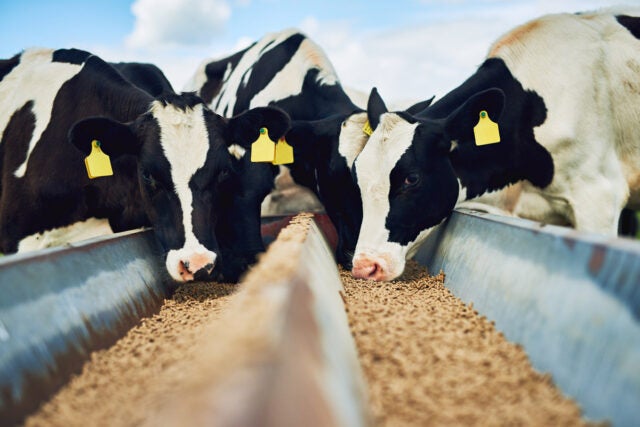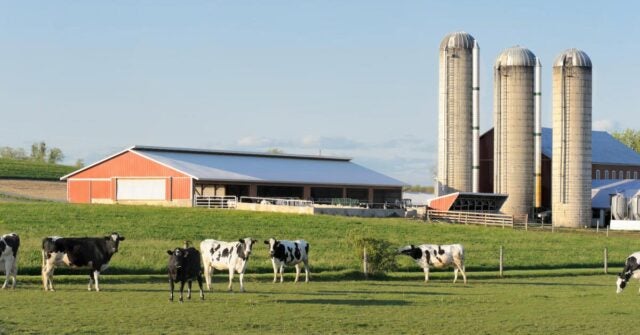- Resources
- Dairy methane disclosure: A guide for publicly disclosing dairy methane emissions
Resources
Dairy methane disclosure: A guide for publicly disclosing dairy methane emissions
Published: November 13, 2024 by Katie Anderson
Building on separate guidance on dairy methane accounting, this guide aims to help companies determine which dairy methane emissions metrics to disclose and how to publicly disclose them in alignment with dairy methane disclosure best practices and leading environmental, social, and governance (ESG) reporting frameworks.
Why disclose dairy methane emissions?
- Ensure accountability and transparently communicate methane emissions impacts and activities publicly to stakeholders, including investors, regulatory bodies, customers, civil society, and others
- Track progress over time and identify opportunities to target reduction efforts
- Be an industry leader on climate disclosure and catalyze other companies to follow suit
What to disclose
- Reporting year
- Total scope 1, 2 and 3 emissions
- Scope 1 methane emissions by source (e.g., enteric, manure management, etc.)
- Scope 3 methane emissions by source (e.g., enteric, manure management, etc.)
- Scope 1, 2 and 3 greenhouse gas (GHG) reduction targets
- Methane-specific targets, if any
- Annual actions and progress from previous year
How and where to disclose
- Disclosures should be annual and publicly available.
- Disclosure in a public, web-based CSR/ESG/impact report at minimum.
Additional private reporting opportunities include:
- Financial disclosures, as required by applicable regulations
- Reporting platforms and frameworks: CDP (platform), ISSB, SASB, TCFD, GRI (frameworks)
- Customer reporting platforms: Walmart Project Gigaton, THESIS, others
Methane-emissions disclosure opportunities within key reporting platforms, frameworks and standards.
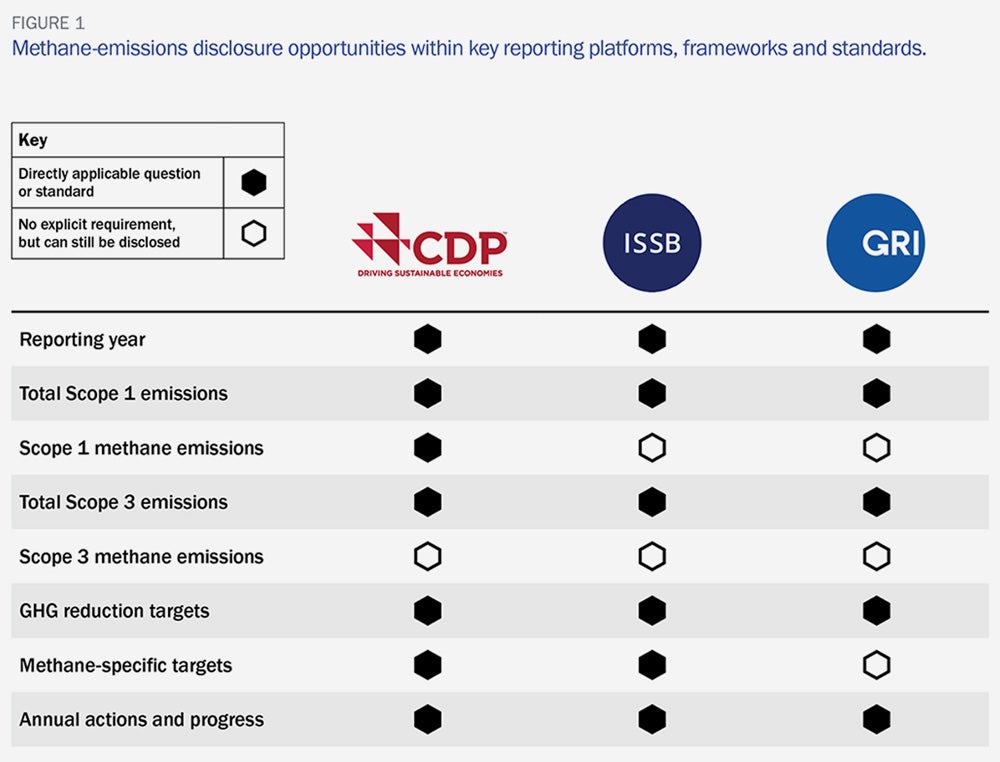
Next steps
Ultimately, disclosing agricultural dairy methane sends the market signal that methane reduction is a priority, thereby defining industry leadership and catalyzing other dairy sector companies to do the same.
The next step of this work is for companies to develop methane action plans for their dairy value chains. Dairy methane action plans (DMAPs) are critical in providing transparency to external stakeholders on how companies are addressing the business risks associated with climate change and how they intend to achieve their climate and/or methane targets. Methane action planning also signals the importance of the work in the marketplace and demonstrates industry-wide leadership on climate. Stay tuned for our dairy methane action planning guide, slated for publication in 2025.
Join us
Would your company like to learn more about the Dairy Methane Action Alliance and learn from peers and EDF’s experts to build out your company’s dairy methane action strategy? Get in touch with our team here.
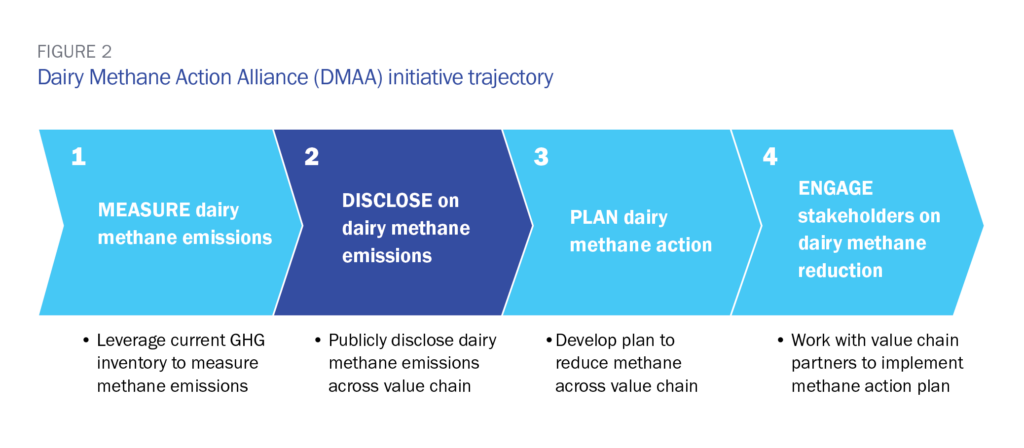
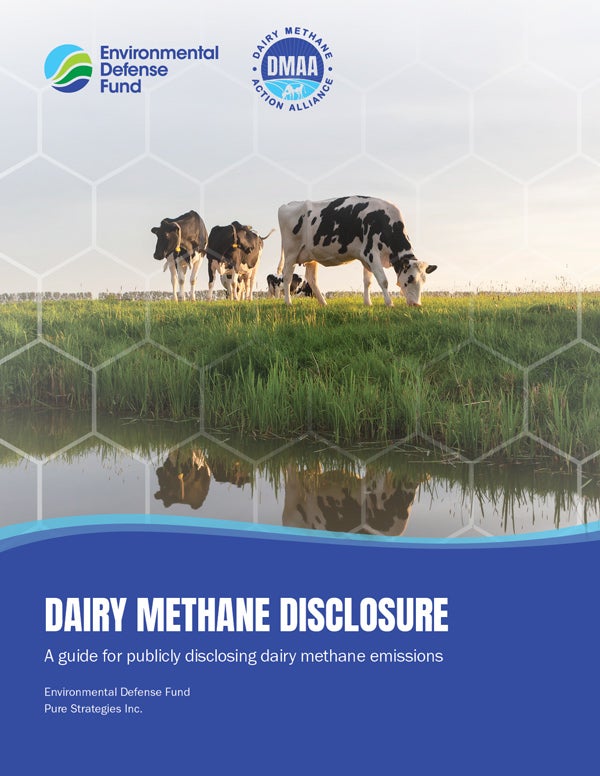

-
Dairy Methane Action AllianceLearn More
-
Dairy Methane AccountingView Guide
-
Dairy Methane Action PlanView Guide
-
Dairy Methane Stakeholder EngagementView Guide
